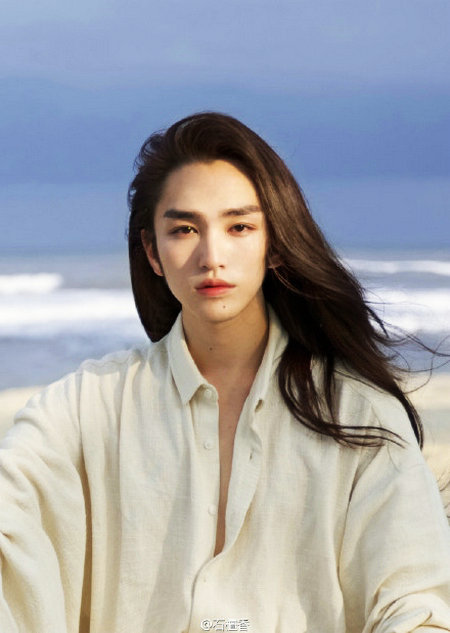Soft or tough: Standard of handsome men in ancient China
 0 Comment(s)
0 Comment(s) Print
Print E-mail chinadaily.com.cn, August 16, 2016
E-mail chinadaily.com.cn, August 16, 2016
It seems that Chinese women have too many " national husbands" nowadays. Once there is an extremely popular actor or athlete, often single, he will be elevated to the altar as a "national husband".
 |
|
Xing Ye, a Chinese man who is popular on the internet because of his effeminate beauty. [Photo/Sina Weibo] |
Some of these "husbands" are very fit, with nice muscles, while the others are gentle, even effeminate.
But do they also look attractive in ancient China?
It is known that the definition of good-looking often varies with society and time. And in ancient China, the standard of handsome men also changes in different periods.
Males can be roughly classified into two categories: gentle and delicate men, and strong and robust ones. Both these two kinds enjoyed the same degree of popularity among ancient Chinese women before the Qin Dynasty (c.21st century-221 BC).
In a story recorded in Zuo Zhuan (《左传》), the earliest annals in China, a woman vacillated between a gentle man and strong one. She eventually chose the latter.
And the Book of Songs (《诗经》), or Shi Jin, which recorded the ancient odes and songs in China, "beautiful white jade" and "flowers" were used to describe nice looking men.
Apart from a beautiful face, men's height was also another important factor when judging their looks.
However, during Wei, Jin and Southern and Northern Dynasties (220-581), those soft and effeminate men dwarfed their strong counterparts for more than 300 years.
An extremely beautiful man, Pan An, was born during this time. And he later became the standard of handsome men in China. In Chinese, when describing a man as "looks like Pan An", it could be the highest praise to his looks.
There was another man during this period, Wei Jie, who died at age 27, also very famous in Chinese history for his appearance. He was described as pretty, soft, and frail.
He died young, and was recorded in Jin Shu (《晋书》) as dying from "being looked at too much". Jin Shu noted that large crowds of people expected to take a look at Wei Jie's beautiful face.
Dying from "being looked at too much" might sound ridiculous. Yet his beauty was even mentioned in a famous chronological history book Zi Zhi Tong Jian (《资治通鉴》), complied by Sima Guang in the Song Dynasty (420-479).
It wasn't until the Tang Dynasty (618-907) that handsome men with strong and fit bodies regained their glory.
Tang people preferred magnificent, glorious and strong things, such fat and strong horses, peonies with large petals. As to men, Tang women liked the fitter and stronger ones.
Men's physical ability was also paid a special attention during this time. Men who were good at horse riding, archery, swordsmanship and martial arts were highly praised.
Later in the Ming and Qing Dynasty (1368-1911), Prince Charming for women, turned out to be those were thin, gentle with delicate features and good manners again.
In the Chinese classic The Dream of Red Chamber, finished in the Qing Dynasty, protagonist Jia Baoyu was described as having a beautiful fairy face, with the glory of the moon and color of spring flowers on his cheek. His brows also have the shape of fine willow leaves.
As a real "rich second generation" with a nice outlook, Jia is a standard soft and well –mannered man, sexually appealing to both men and women in the book.






Go to Forum >>0 Comment(s)